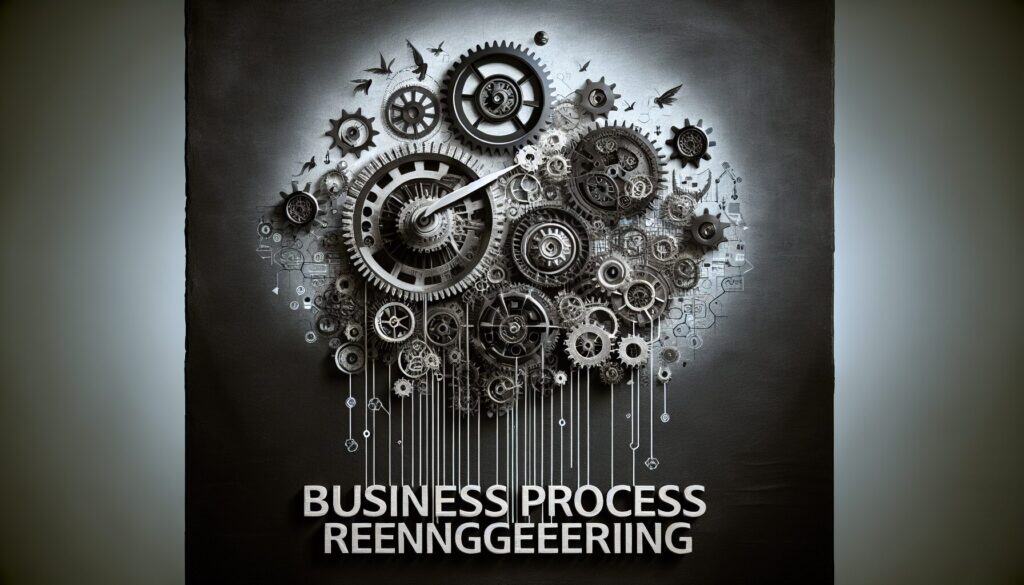一种管理方法,旨在对核心业务流程进行彻底的重新设计,以大幅提高生产率、周期时间和质量。
- 方法: 人体工程学
业务流程重组(BPR)

业务流程重组(BPR)
- 业务流程重组(BPR), 变更管理, 持续改进, 创新, 精益制造, 流程改进, 工艺优化, 质量管理, 价值流映射
目标
如何使用
- 涉及从根本上重新思考和重新设计工作方式,通常利用信息技术,以实现绩效上的突破,而不是渐进式的改进。
优点
- 可显著提高效率、降低成本和客户满意度;鼓励激进创新,挑战现有假设。
缺点
- 失败风险高;可能会扰乱组织和员工士气;需要高层管理者的有力领导和大量投资;往往涉及裁员。
类别
- 项目管理, 质量
最适合:
- 通过从根本上重新设计核心业务流程,从根本上提高业务绩效。
Hammer and Champy’s Business Process Reengineering (BPR) methodology is particularly relevant in industries undergoing digital transformation, such as manufacturing, healthcare, and retail. It is commonly applied during project phases that involve substantial changes to workflows or the integration of new technologies. Organizations often initiate BPR when seeking to address declining performance metrics or escalating operational costs, typically requiring participation from cross-functional teams that include stakeholders from various departments such as IT, finance, and operations to ensure a comprehensive approach. For instance, a manufacturing firm may implement BPR to overhaul its supply chain processes by leveraging advanced data analytics for better inventory management, allowing for real-time decision-making and improved production schedules. Such initiatives encourage teams to question existing practices and remove unnecessary steps, thereby driving innovation. Successful reengineering efforts can result in not just enhanced efficiency but also a transformation in how companies engage with their customers, ultimately leading to elevated satisfaction levels as services become faster and more reliable. Companies that have implemented this approach often report not just financial gains, but also a cultural shift towards embracing change and continuous improvement within the workforce. The collaborative nature of BPR promotes knowledge sharing among employees, fostering an environment where innovative solutions can emerge to solve pressing operational challenges.
该方法的关键步骤
- Identify the existing processes that need reengineering.
- Analyze and challenge the assumptions underlying the current processes.
- Define the objectives and goals for the redesigned processes.
- Develop new process designs that leverage technology and innovation.
- Implement the redesigned processes across the organization.
- Measure the performance of the new processes against the established objectives.
- Continuously refine and improve the processes based on feedback and performance data.
专业提示
- Conduct a deep analysis of existing processes to uncover hidden inefficiencies and redundancies before initiating redesign efforts.
- Incorporate cross-functional teams in the reengineering process to ensure diverse viewpoints and expertise are utilized.
- Implement a phased approach for technology integration to allow for iterative feedback and minimize disruption during the transition.
历史背景
1960
1980
1983
1990
1995
2000
2010
1950
1980
1980
1986
1994
1995
2000
(如果日期不详或不相关,例如 "流体力学",则对其显著出现的时间作了四舍五入的估计)。














相关文章
蒙特卡罗模拟
基于模型的测试
型号检查
混合方法研究
防错(Poka-Yoke)
任务简介测试